Iran Reveals Plans To Produce 20,000 MW Nuclear Power
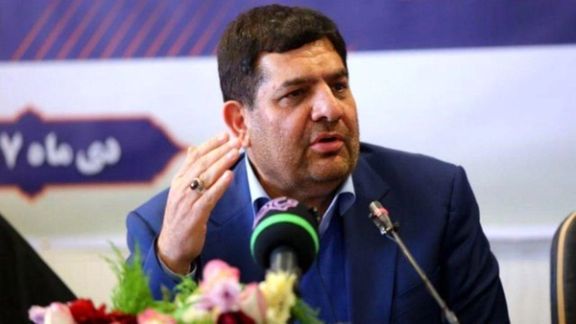
Iran’s vice president claims the country is planning to produce 20,000 megawatts of electricity using nuclear power.

Iran’s vice president claims the country is planning to produce 20,000 megawatts of electricity using nuclear power.
Mohammad Mokhber said on Wednesday that the use of fossil fuel is losing its place and the importance of nuclear energy is doubling.
He also ordered the Minister of Energy and the Head of the Atomic Energy Organization (AEOI) to compile a plan for the construction of a 20,000-megawatt nuclear power plant and provide the necessary resources for the implementation of this plan in the next year’s budget.
Iranian Supreme Leader Ali Khamenei spoke to members of the country's nuclear industry on June 11, amid reports that Tehran and Washington were indirectly negotiating a nuclear deal via Oman.
In that meeting, he urged the AEOI to continue developing the nuclear program to reach the 20,000 megawatts of nuclear power goal.
His ambitions come as currently, the United States generates 95,492 megawatts of nuclear power, which is required to operate 93 reactors.
Iran has the second largest natural gas reserves in the world, holding more than 17 percent of global discovered gas fields.
Iran has done little to upgrade its energy industry since its peak a decade ago when its annual oil export revenue reached $100 billion. Unlike neighboring Qatar, Iran has seen a steady decline in its natural gas production due to a lack of technology to maintain output, meaning one of the world's largest gas fields is all but stagnant.
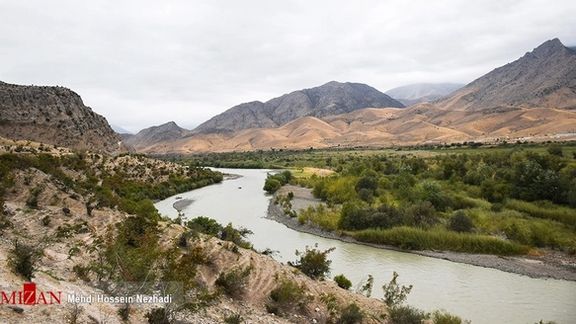
Media reports about possible radioactive contamination of Aras River in Iran’s northwestern borders by Armenia’s nuclear power plant has led to widespread concerns.
However, Iran's Nuclear Safety Center has refuted the reports. In a statement on Tuesday, the center which is an affiliate of Atomic Energy Organization of Iran (AEOI) said the river Aras is monitored at least once a year for radioactive pollution and that the last survey in March this year did not indicate any radioactive pollution as claimed by Payam-e Ma newspaper on Monday.
Quoting a paper published earlier by the Border Studies Research Journal of the Iranian police, Payam-e Ma on Monday suggested that the extremely high occurrence of various types of cancers and liver diseases in Ardabil Province bordering the Republic of Azerbaijan, could be attributed to radioactive pollution of the Aras River emanating from Armenia’s nuclear power plant situated in Metsamor hundreds of kilometers to the west.
Payam-e Ma’s article followed a warning on June 12 by Mahmoud Abbaszadeh-Meshkini, a member of the Iranian Parliament’s National Security and Foreign Policy Committee who claimed that effluent from the power plant which was polluting the river could be the cause of the high occurrence of cancer in Iran’s Ardabil.
However, the cause of the high rate of cancer in the area is hard to establish. It is not clear whether the phenomenon is related to the environment or has other underlying reasons. But concerns linger on as many do not trust the Iranian government on the issue of radioactive contamination.
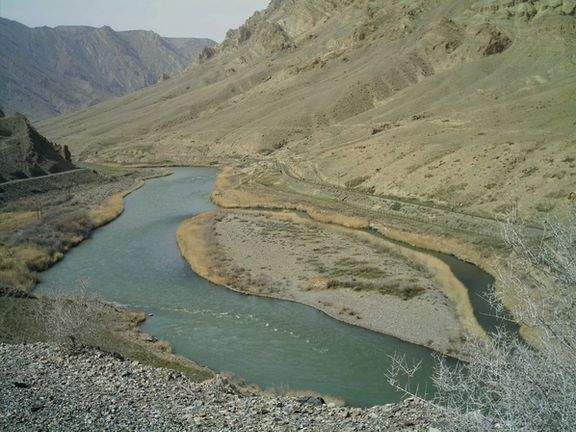
A deputy health minister, Dr. Reza Malekzadeh, told the media in October 2020 that a longitudinal study carried out over a period of 20 years about the occurrence of stomach cancer in Ardabil Province has shown a rate of 50 per 100,000 of the province’s population. This is the highest rate in the country.
However, the Nuclear Safety Center’s statement said the Armenian power plant is too far from the Aras for its effluent to reach the river and pollute it as claimed.
The Aras River which rises in Turkey forms part of Iran's border with its northwestern neighbors, Armenia and Azerbaijan, before flowing into the Kura River in Azerbaijan.
“The Aras River is being continually monitored for radioactivity and other required substances,” the statement said and added that the center will establish an online water monitoring station in the said area very soon to carry out tests.
In the past ten years, Iranian officials have repeatedly denied radioactive pollution of the Aras River by the Armenian nuclear plant.
Metsamor Nuclear Power Plant which is the only nuclear power plant in the South Caucasus was built in the 1970s. The two units of the plant provide a total of 815 MW of electricity and supplied approximately 40 percent of Armenia’s electricity in 2015.
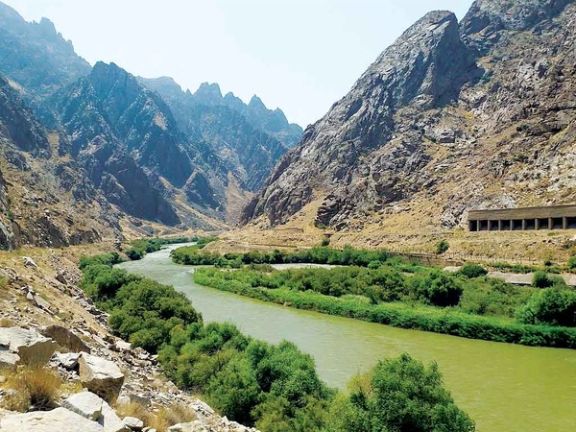
The plant has been a source of environmental concern since the Spitak Earthquake in 1988 which led to its closure until 1995. The plant has been classified by the EU as the oldest and least reliable of all the 66 reactors built by the former Soviet Union.
The International Atomic Energy Agency (IAEA), however, said in 2011 that the plant posed an “acceptable” level of risk to the environment and could “in principle” operate beyond its design life span.
The media have also warned that heavy metals in the effluent of other industries in Armenia, Turkey and Iran have been polluting the river for many years. Most of the pollution, however, is apparently caused by Armenian copper mines and plants in the area.
Firuz Ghasemzadeh, spokesman of the Iranian Water Industry, told the Iranian Labour News Agency (ILNA) on May 10 that the Iranian ministry of energy and both Iran’s and Armenia’s departments of environment had been investigating the pollution caused by the Armenian mines.
According to Ghasemzadeh, sources of pollution were eliminated by installation of water treatment facilities, but occasional pollution was still possible. He also stressed that Armenia has given assurances that it would control the sources of pollution.
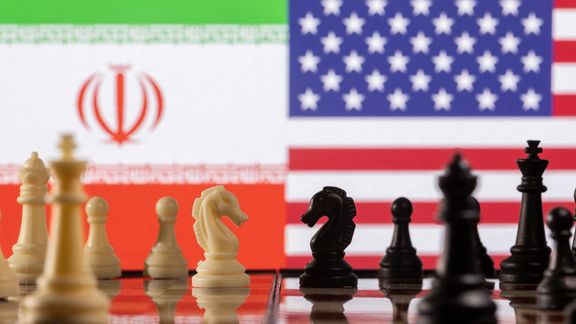
As diplomats weigh whether Iran’s nuclear expansion is angling for greater leverage at the negotiating table or part of a wider plan, recent talks raise questions.
The Financial Times reports that even if it is a negotiating tactic, the more advanced the program becomes, the more Tehran is expected to demand in return for reversing its gains.
That is why more media reports indicate a limited nuclear deal in the offing, with Iran to cap uranium enrichment at 60 percent while the United States gives some sanctions relief to Iran.
Henry Rome of the Washington Institute for Near East Policy told the newspaper: “As they [Iran] accumulate more and more chips on the nuclear side, yes they could give some away, but it also moves them closer to what has arguably been the long-term goal — to be recognized as a nuclear threshold state.”
As Iran gets closer to its goals, pushing evermore the boundaries of agreed terms, the chances of a reverse look increasingly unlikely. “Once you’re there, it might be tough to argue to give that up,” Rome added.
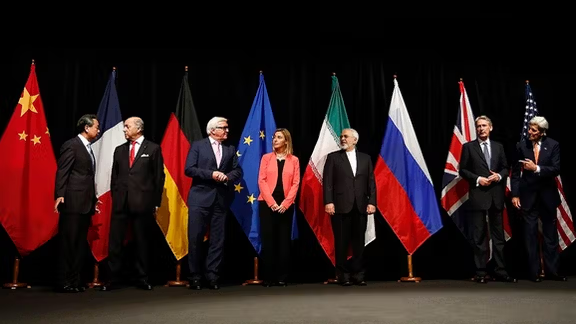
Time is ticking with October approaching, the time when the nuclear deal, or JCPOA clauses that impose sanctions on Iran’s ballistic missile program expire. While the likes of the E3 (UK, France, Germany) and US scramble to makes things right, Iran shows no signs of abating.
The regime continues to sell weapons to Russia even after months of denial. New revelations reported by Israel’s ALMA research center show that it is a complex operation with no end in sight.
The Biden administration is trying its best to calm the situation, not least with the chances of a Trump return in 2024 -- or yet still, another Iran hawk - don’t look as unrealistic as many would hope.
Whether that be another destabilizing factor or a deterrent to Iran is yet to be seen as the regime becomes ever more emboldened in the wake of diplomatic victories such as its recent detente with Saudi Arabia.
Speaking to the Financial Times, Hossein Mousavian, a former senior Iranian official now at Princeton University, warns that if there is no deal there would be an escalation with Iran enriching at 90 percent, the west triggering snapback UN sanctions and Tehran suspending its membership of the Treaty of Non-Proliferation of Nuclear Weapons.
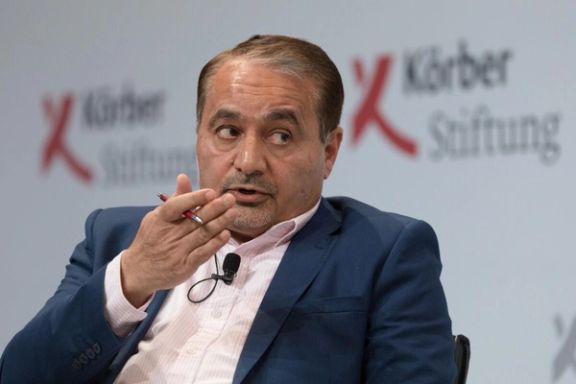
He somehow believes Iran is ready to revive the JCPOA, or reach a deal in which Tehran reduces tensions and the US turns a blind eye to oil and petrochemical exports.
Though hard to believe given the extent of sanctions, Mousavian claims Iran expected to be set to benefit from a Russian war with Ukraine as oil and gas supplies became scarce. Hoping that would help secure a better deal, that, he says, led Iran to reject draft proposals last August.
What few analysts seem to be sufficiently aware of is Iran's worsening economic crisis, with inflation reaching 70 percent and the currency, rial, losing half its value in the past year. While Iran might be trying to use its nuclear escalation option, the United States has its foot on the regime's financial lifeline.
Moving forward, Mousavian seems to think as long as Khamenei is in power, the regime will not seek to develop a weapon. Its actions say otherwise. “If there’s a Trump school of thought, then everything would be terminated; plan A, plan B, the JCPOA, [everything] but coercion or war,” Mousavian says. “The response would be: go for nuclear to reach a deal.”
If the ageing supreme leader, now 84, were to be no more, “nobody knows what could happen after”, he said.
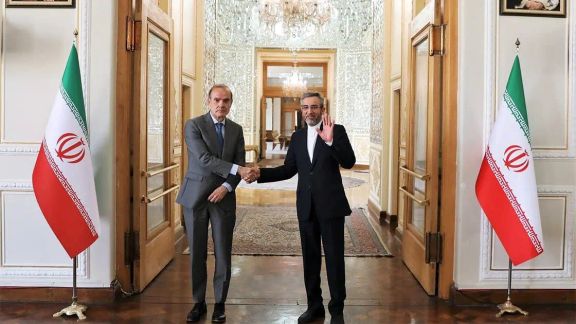
European Union foreign policy official Enrique Mora and Iran’s chief nuclear negotiator Ali Bagheri-Kani are holding meetings in Qatar, an Austria-based journalist reported.
Stephanie Liechtenstein who has been following the Iran nuclear negotiations tweeted Tuesday that according to her sources Mora and Bagheri-Kani met Tuesday and will also meet on Wednesday.
She said that “talks are focused mainly on Iran’s military support for Russia’s war against Ukraine as well as on the nuclear file and detainees.”
Iran’s foreign minister Hossein Amir-Abdollahian arrived with a delegation possibly including Bagheri-Kani who is also deputy foreign minister in Doha Monday evening and held talks with Qatari officials on Tuesday, in what many believed to be related to issues pertaining to disputes with the United States.
“I am told the meeting is another attempt to help ease tensions,” Lichtenstein said, as the multilateral nuclear talks ended last September when Tehran put forth conditions unacceptable for Washington.
Since September, the US has demanded an end to Iran’s weapons supplies to Russia that has included hundreds of Kamikaze drones used against Ukrainian military and civilian targets.
In recent weeks there have been a flurry of reports about direct and indirect talks between Washington and Tehran on the nuclear issue, Americans held hostage in Iran and possibly Iran’s military cooperation with Russia. Some reports suggest that the US intends to reach a an unwritten interim nuclear deal, whereby it offers sanctions relief to Iran in exchange for a freeze on uranium enrichment at 60 percent.

Iran’s foreign minister Hossein Amir-Abdollahian met Qatar’s Emir in Doha on Tuesday in what may be related to reported indirect talks with the United States.
Amir-Abdollahian who arrived in Qatar Monday evening is accompanied by a delegation and will also visit Oman, another friendly regional country that has been a traditional mediator between Tehran and Washington.
Iranian government media had little to say about the foreign minister’s trip early on Tuesday, simply reporting on the meeting with the Emir, Sheikh Tamim bin Hamad Al Thani, and saying that discussing international, regional and bilateral issues were the purpose of his visit to Qatar.
In recent weeks, both Iran and the United States have indicated that they are in indirect contact, although several media reports since January have also described direct talks between the US special envoy for Iran, Rob Malley and Iran’s ambassador at the United Nations, Saeed Iravani.
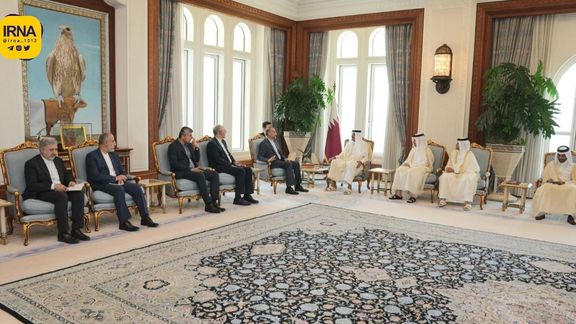
Israeli media and officials insist that already a limited agreement or a “mini-deal” has been worked out between Washington and Tehran aimed at stopping further Iranian uranium enrichment in exchange for US agreement to allow third countries to unfreeze Iranian funds and limited sanctions relief.
The US has denied these reports describing them as “inaccurate” or false, but earlier this month the Biden administration allowed Iraq to release more than $2.7 billion of money it owed to Iran for importing energy.
Although the administration insisted that the funds are earmarked for Iran to import food and medicines, the whole scheme is shrouded in mystery and it is not clear if Tehran would actually get its hands on cash US dollars, something Washington has tried to prevent since 2018 when it imposed economic sanctions.
Critics argue that any transfer of cash to the Iranian regime will bolster its ability to foment instability in the region. Some say that even financing its humanitarian needs will free up government funds for its military and proxy forces in the region.
The regime has been hosting leaders of Palestinian militant groups in Tehran and Supreme Leader Ali Khamenei held a meeting with them.

Ziyad al-Nakhalah, the leader of the Palestinian Islamic Jihad (PIJ), has been in Iran since last week, culminating in the arrival of Hamas leader Ismail Haniyeh in Tehran on Monday.
The groups, both designated terrorist outfits by the European Union, the US, the UK, Canada, and Israel, have been receiving financial support from the Islamic Republic, presumably for wreaking havoc in Israel, or what the regime calls “resistance.”
Amir-Abdollahian’s trip to Qatar and Oman followed the visit of Saudi foreign minister Prince Faisal bin Farhan to Tehran over the weekend after the two countries agreed to re-establish diplomatic ties in March after seven years of bitter animosity.
Although the détente with Saudi Arabia heralded an end to Iran’s isolation in the region, Riyadh has expectations from Tehran, the most important of which is security in the Persian Gulf region and an end to hostilities in Yemen.
"I would like to refer to the importance of cooperation between the two countries on regional security, especially the security of maritime navigation... and the importance of cooperation among all regional countries to ensure that it is free of weapons of mass destruction," Prince Faisal said during a press conference in Tehran.
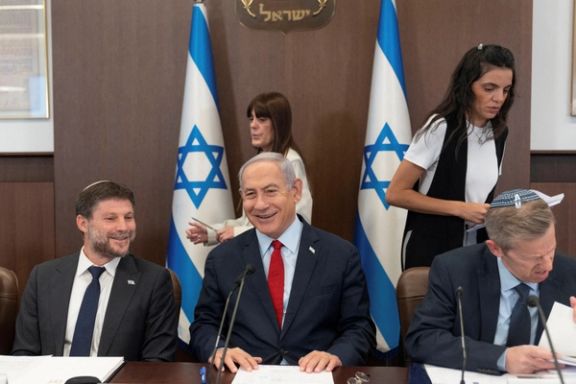
The Israeli premier says a nuclear agreement between Iran and the US will neither stop the regime from building a bomb nor stop Israel from attacking the Islamic Republic.
Prime Minister Benjamin Netanyahu made the remarks on Sunday in reaction to reports citing a Western official that the objective of the impending nuclear deal between Washington and Tehran is to stop Israel from attacking Iran.
The statement goes against all other reports in recent days that quoted other Israeli politicians such as Yuli Edelstein, the head of the Israeli parliament's Foreign Affairs and Defense Committee, who said Israel could accept such a deal if it includes rigorous supervision of Tehran's nuclear program.
“Our first mission is to stop Iran from going nuclear,” Netanyahu said at the opening of the weekly cabinet meeting. “We made clear to our American friends time after time, and I am doing it again today, that we oppose agreements, first of all to the original agreement called the JCPOA, which will just pave Iran’s way to the bomb and will pad it with hundreds of millions of dollars.”
“We also tell [the Americans] that more limited understandings, what’s called a ‘mini-deal,’ does not serve our purpose, in our opinion, and we oppose that, as well,” he said, claiming that his “principled opposition” to the JCPOA played a part in ensuring the US does not return to that deal.
Bibi added that “Israel will do whatever it needs on its own to defend itself from Iranian aggression, whether on the nuclear file or its terrorist proxies.”